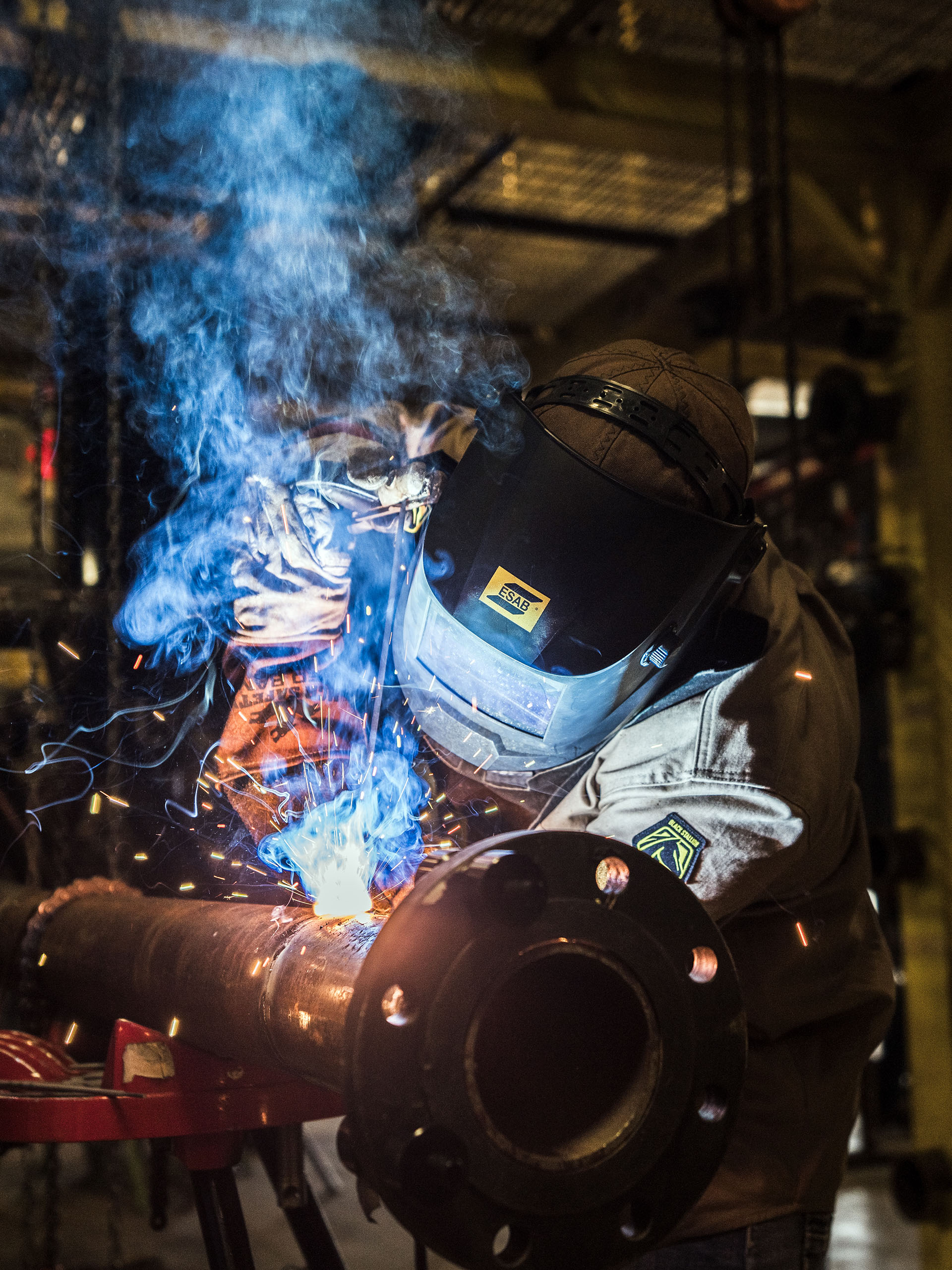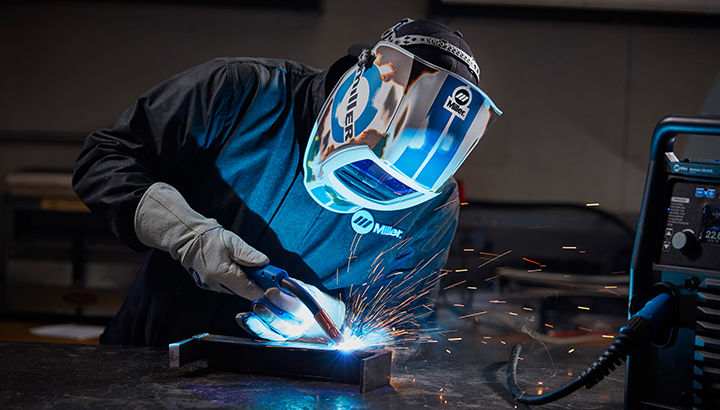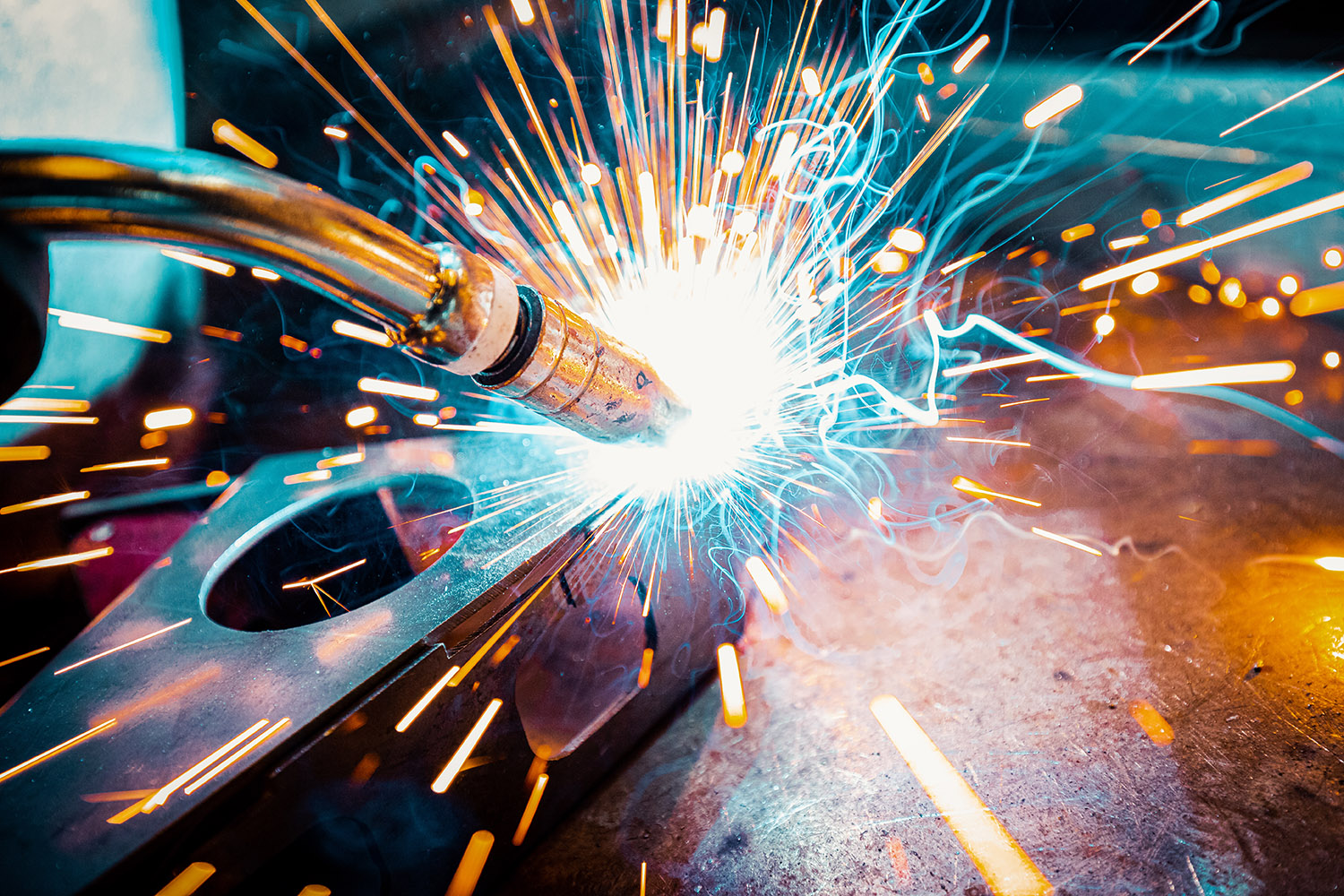Common Welding Repair Work Issues and Just How to Address Them Properly
Welding fixings often run into a series of concerns that can jeopardize the integrity of the last product. Usual troubles consist of inadequate infiltration, porosity, and misalignment, to name a few. Each problem presents one-of-a-kind challenges that need details techniques for resolution. Comprehending these issues is necessary for welders aiming to enhance their end results and skills. This discussion will certainly discover these typical welding repair work issues and reliable methods to address them.
Poor Infiltration
Inadequate infiltration happens when the weld metal fails to completely fuse with the base product, resulting in weak joints and prospective architectural failures. This concern usually originates from not enough warm input, incorrect electrode angle, or incorrect welding rate. Welders may come across insufficient penetration as a result of a miscalculation of the required parameters for a details material thickness or type. Additionally, contamination on the base product's surface can hinder effective bonding, aggravating the problem. To address insufficient infiltration, welders need to guarantee appropriate settings on their equipment and preserve a tidy job surface area. Normal evaluation of welds is recommended to identify any kind of shortages early, enabling prompt modifications and the avoidance of compromised architectural honesty in bonded assemblies.
Porosity
Porosity is a typical defect in welded joints that materializes as tiny gas bubbles caught within the weld metal. This flaw can endanger the integrity of the weld, bring about decreased strength and possible failure under tension. Montana Mobile Welding and Repair. Porosity generally occurs from contamination, wetness, or inappropriate welding strategies, which enable gases to get away right into the liquified weld pool. To address porosity, welders need to assure correct surface preparation, keep a tidy functioning atmosphere, and use ideal welding parameters. In addition, choosing the appropriate filler material and securing gas can mitigate gas entrapment. Regular evaluation and testing of welds can help recognize porosity early, guaranteeing timely restorative actions are taken, thus preserving the top quality and dependability of the welded structure
Imbalance
Misalignment in welding can emerge from various variables, consisting of improper arrangement and thermal expansion. Comprehending the source is vital for reliable resolution. Several improvement techniques are available to straighten elements and guarantee structural integrity.
Sources of Imbalance
Welding misalignment frequently stems from a range of underlying problems that can compromise architectural stability. One main cause is inappropriate fit-up of elements before welding, which can lead to spaces and irregular surfaces. Variations in thermal expansion throughout the welding procedure can likewise result in distortion, especially if the products being joined have various coefficients of expansion. Additionally, insufficient clamping and fixturing may fall short to hold elements securely in location, causing activity throughout welding. Poorly conserved tools, including welding machines and tools, might introduce incongruities in the weld bead, further adding to imbalance. Operator error, stemming from insufficient training or experience, can likewise play a considerable duty in developing misaligned welds.

Adjustment Methods Offered
Attending to misalignment effectively requires a mix of rehabilitative methods tailored to the details problems handy. One typical method is using components or jigs to hold elements in the correct setting throughout welding, making certain constant alignment. Furthermore, pre-heating the materials can assist minimize distortion and improve fit-up. For significant misalignment, mechanical adjustment techniques, such as using hydraulic jacks or clamps, can be utilized to remedy the position prior to welding. Post-weld warmth therapy might also be required to alleviate stresses brought on by imbalance. Ultimately, careful inspection and modification throughout the setup phase can protect against misalignment issues from ending up being substantial troubles, promoting a smoother welding procedure and enhancing total structural stability.
Distortion
Distortion is an usual challenge in welding that can arise from various aspects, consisting of irregular heating and cooling. Recognizing the reasons of distortion is crucial for applying reliable avoidance methods. Resolving this concern not only improves structural stability however likewise enhances the total high quality of the weld.
Root causes of Distortion
When based on the intense heat of welding, products usually undergo adjustments that can result in distortion. This phenomenon mainly arises from thermal growth and tightening during the welding process. As the weld location warms up, the material broadens; upon cooling, it acquires, which can develop internal stress and anxieties. Additionally, unequal home heating throughout a workpiece can aggravate these stresses, resulting in warping or bending. The sort of material likewise plays a significant function; steels with differing thermal conductivity and coefficients of development may react differently, resulting in unforeseeable distortions. Inadequate joint layout and poor fixturing can add to misalignment throughout welding, raising the probability of distortion. Recognizing these reasons is vital for efficient welding repair work and avoidance strategies.
Avoidance Techniques
Effective avoidance methods for distortion during welding emphasis on controlling warmth input this and ensuring proper joint style. Preserving a constant warm input helps to decrease thermal growth and tightening, which can lead to distortion. Making use of techniques such as pre-heating the workpiece can likewise reduce the temperature level gradient, promoting consistent home heating. Additionally, choosing suitable joint layouts, such as T-joints or lap joints, can boost security and decrease stress and anxiety content focus. Executing correct fixturing to protect the work surfaces in position better help in preserving positioning throughout the welding procedure. Staggered welding series can disperse warmth more equally, avoiding localized distortion. By applying these approaches, welders can significantly lower the likelihood of distortion and enhance the general quality of their welds.
Splitting
Fracturing is a typical issue run into in welding repair work, commonly arising from numerous factors such as incorrect cooling prices, material selection, or poor joint prep work. The event of fractures can considerably jeopardize the honesty of the weld, causing possible failures throughout operation. To resolve this concern, welders should initially evaluate the origin causes, guaranteeing that products are suitable and properly selected for the details application. Furthermore, controlling the cooling rate throughout the welding process is important; quick cooling can cause anxiety and cause cracking. Proper joint design and preparation additionally add to decreasing the risk. Implementing these techniques can boost weld top quality and longevity, eventually lowering the possibility of splitting in completed weldments.

Insufficient Fusion
A significant concern in welding repair work is incomplete blend, which happens when the weld metal does not properly bond with the base material or previous weld passes - Montana Mobile Welding and Repair Fabrication. This issue can cause weak points in the joint, possibly endangering the stability of the bonded structure. Factors contributing to insufficient blend include insufficient warmth input, inappropriate welding method, and contamination of the surfaces being joined. To address this issue successfully, welders should guarantee appropriate pre-weld cleansing and surface prep work, along with readjust their welding specifications to accomplish ample infiltration and combination. Routine evaluation throughout the welding procedure can likewise aid recognize incomplete fusion early, enabling for timely restorative actions to enhance the overall high quality of the weld
Overheating
While welding repair services can improve structural integrity, overheating offers a significant difficulty that can cause product destruction. Too much heat during welding can alter the mechanical residential or click site commercial properties of metals, leading to reduced stamina, increased brittleness, and warping. This sensation is specifically vital in high-stress applications where structural dependability is extremely important. Determining getting too hot can entail visual evaluations for staining or distortion, along with checking temperature during the welding procedure. To minimize the threats connected with getting too hot, welders must utilize appropriate techniques, such as regulating warm input, changing travel speed, and using ideal filler products. Additionally, implementing pre- and post-weld warmth therapies can aid recover product residential or commercial properties and enhance the general top quality of the repair work, making sure lasting efficiency and security.
Regularly Asked Inquiries
What Are the Common Indications of a Welding Issue?

Exactly How Can I Check My Welds for Top quality?
To check welds for high quality, one can utilize visual assessments, ultrasonic testing, and radiographic techniques. Each method assures structural stability, determines defects, and verifies adherence to specified standards, eventually improving the integrity of the bonded joints.
What Security Precautions Should I Take While Welding?
When welding, one must prioritize security by putting on suitable personal protective equipment, guaranteeing appropriate ventilation, securing combustible products away, preserving a tidy workspace, and being mindful of surroundings to avoid injuries and mishaps.
Can I Fix a Weld Without Redesigning the Entire Joint?
Repairing a weld without renovating the entire joint is possible, depending upon the damages (Montana Mobile Welding and Repair). Strategies such as grinding, adding filler product, or making use of a welding process can effectively address details flaws while maintaining the bordering framework
What Devices Are Important for Effective Welding Repair Works?
Essential tools for effective welding repairs include a welding machine, cable brush, grinder, safety equipment, clamps, and filler products. Each device plays a crucial role in ensuring high quality and security throughout the fixing process. Porosity usually develops from contamination, moisture, or inappropriate welding methods, which allow gases to run away right into the molten weld swimming pool. Badly conserved equipment, consisting of welding machines and tools, might introduce variances in the weld bead, further contributing to imbalance. When subjected to the intense warmth of welding, products typically undertake changes that can lead to distortion. Splitting is an usual issue come across in welding fixings, commonly resulting from numerous elements such as inappropriate cooling prices, product choice, or inadequate joint preparation. A considerable concern in welding repair work is insufficient blend, which happens when the weld metal does not properly bond with the base product or previous weld passes.